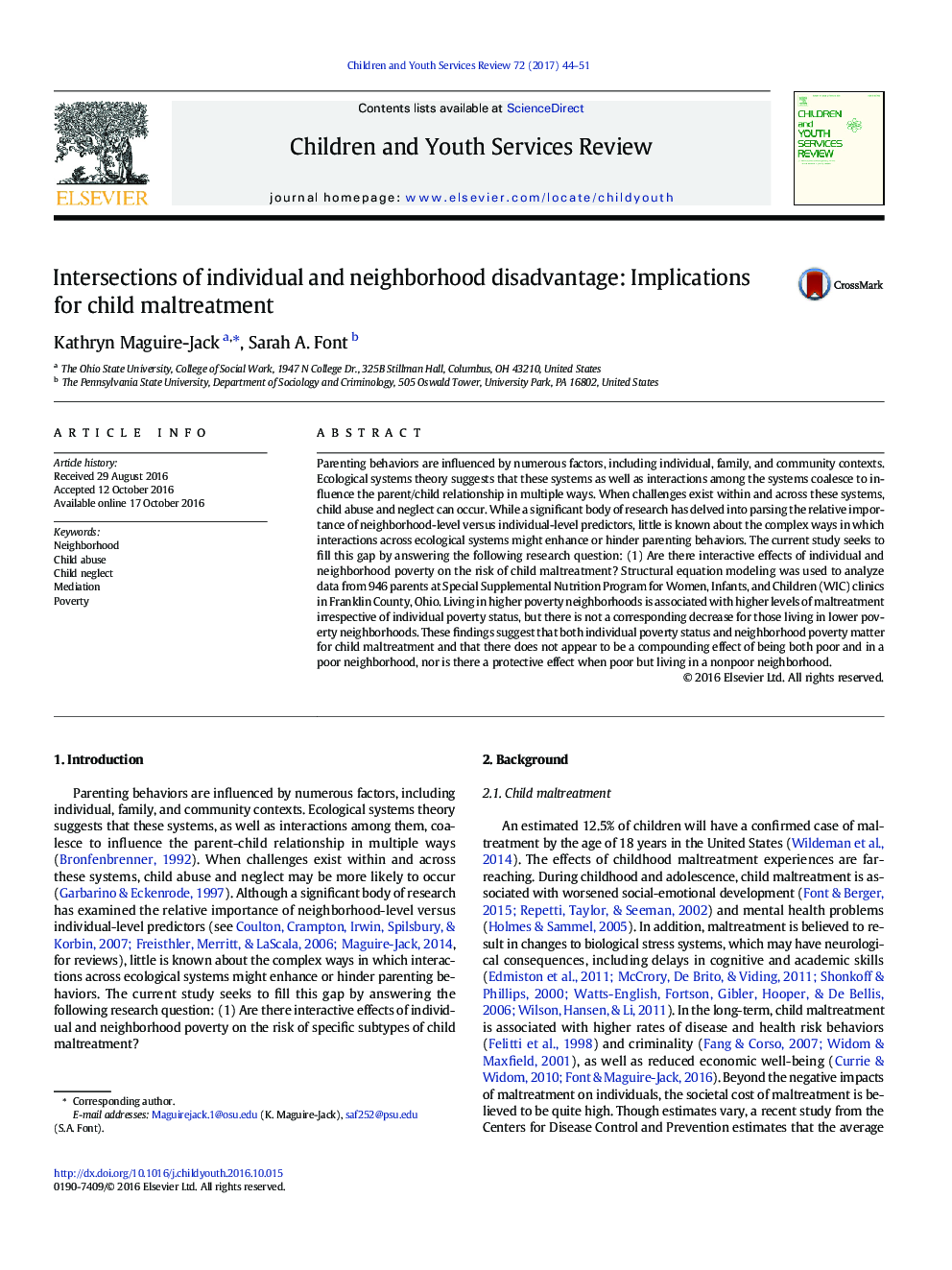| کد مقاله | کد نشریه | سال انتشار | مقاله انگلیسی | نسخه تمام متن |
|---|---|---|---|---|
| 4936321 | 1434437 | 2017 | 8 صفحه PDF | دانلود رایگان |
- Neighborhood poverty is related to neglect, regardless of parent income.
- Affluent neighborhoods reduce physical needs neglect for low-income parents.
- Affluent neighborhoods don't reduce other maltreatment for low-income parents.
Parenting behaviors are influenced by numerous factors, including individual, family, and community contexts. Ecological systems theory suggests that these systems as well as interactions among the systems coalesce to influence the parent/child relationship in multiple ways. When challenges exist within and across these systems, child abuse and neglect can occur. While a significant body of research has delved into parsing the relative importance of neighborhood-level versus individual-level predictors, little is known about the complex ways in which interactions across ecological systems might enhance or hinder parenting behaviors. The current study seeks to fill this gap by answering the following research question: (1) Are there interactive effects of individual and neighborhood poverty on the risk of child maltreatment? Structural equation modeling was used to analyze data from 946 parents at Special Supplemental Nutrition Program for Women, Infants, and Children (WIC) clinics in Franklin County, Ohio. Living in higher poverty neighborhoods is associated with higher levels of maltreatment irrespective of individual poverty status, but there is not a corresponding decrease for those living in lower poverty neighborhoods. These findings suggest that both individual poverty status and neighborhood poverty matter for child maltreatment and that there does not appear to be a compounding effect of being both poor and in a poor neighborhood, nor is there a protective effect when poor but living in a nonpoor neighborhood.
Journal: Children and Youth Services Review - Volume 72, January 2017, Pages 44-51
